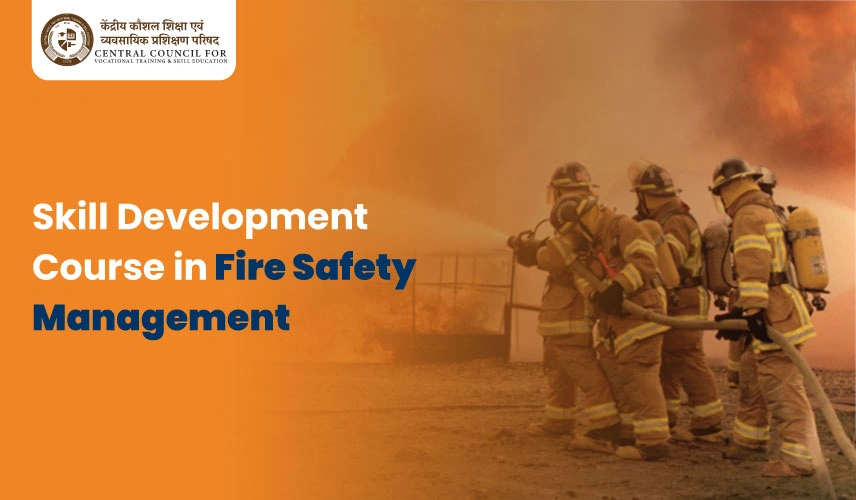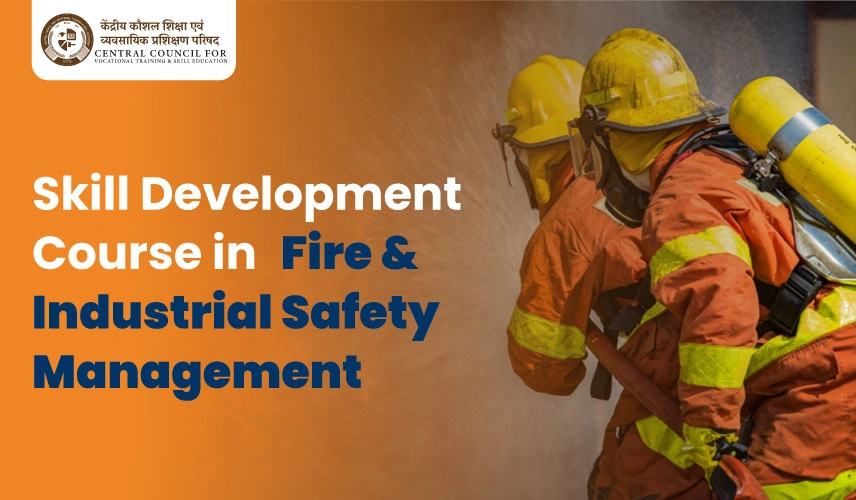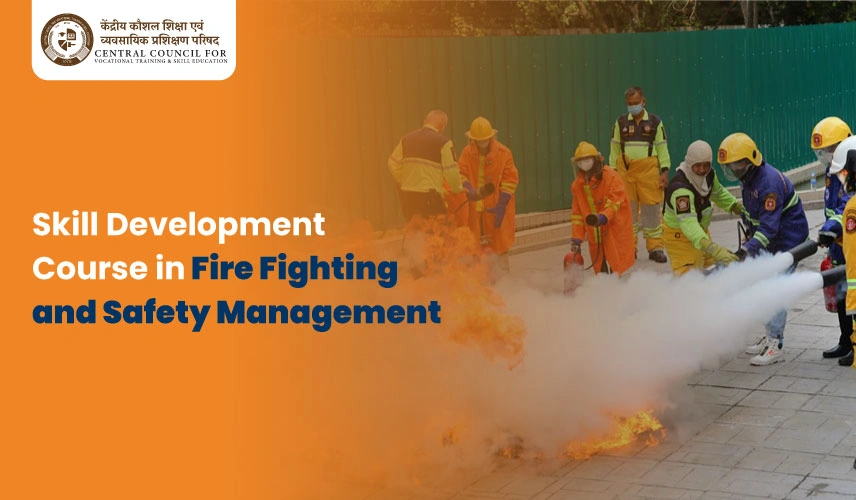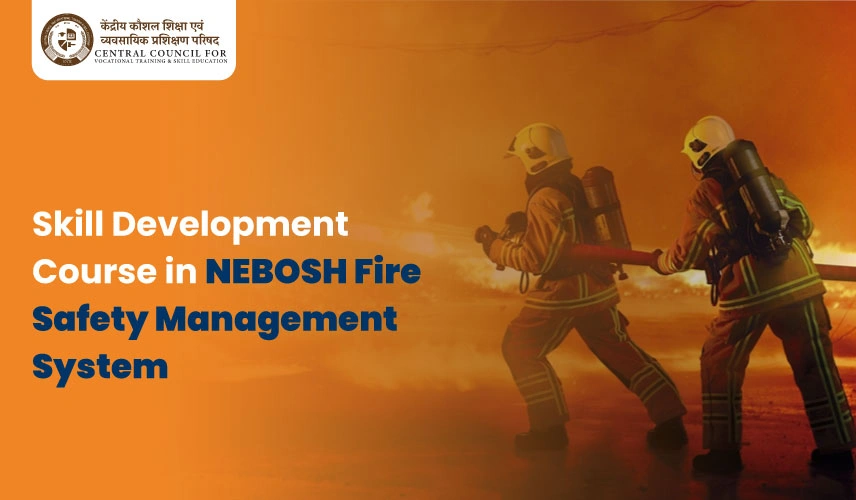- +91 8595350621
- info@ccvte.org
- C4/97B, Keshav Puram, Delhi-110035
Fire Safety Management

Skill Development Program in Fire Safety Management
Fire Safety Management is a critical discipline focused on preventing, managing, and responding to fire-related incidents. It involves implementing effective fire safety measures, conducting risk assessments, and ensuring compliance with safety regulations. The goal is to protect lives, property, and the environment by minimizing the risk of fire and ensuring a prompt and efficient response in case of an emergency. This field encompasses planning, training, and the management of fire protection systems to create a safe and secure environment. Fire Safety Management is a crucial aspect of risk management that aims to protect individuals, property, and the environment from the dangers of fire. It involves a comprehensive approach to preventing, detecting, and responding to fire hazards through systematic planning, implementation, and oversight of fire safety protocols. The Fire Safety Management Course is a comprehensive program designed to provide individuals with essential knowledge and practical skills to manage and oversee fire safety protocols in various settings. This course is critical for those responsible for ensuring compliance with fire safety regulations and maintaining a safe environment in both residential and commercial properties.
Why did you choose the Fire Safety Management Course from CCVTE?
- A skill development course in Fire Safety Management is specifically designed for individuals pursuing a career in fire safety and emergency management.
- The course provides practical skills and knowledge essential for managing fire safety protocols and emergency response.
- Upon completion, students can find job opportunities in various sectors, including corporate, industrial, and public safety roles.
- Key highlights of the course include its flexibility and affordability, enabling students to complete it more quickly and at a lower cost compared to traditional full-time programs.
- The curriculum includes a Diploma in Fire Safety Management, focusing on essential topics such as risk assessment, emergency planning, fire protection systems, and safety regulations.
- This comprehensive training offers a practical, cost-effective pathway to a rewarding career in fire safety management.
Specializations in Fire Safety Management
- Fire Risk Assessment
- Emergency Response Planning
- Fire Protection Systems Management
- Fire Safety Training and Education
- Regulatory Compliance and Safety Standards
- Industrial Fire Safety
- Residential Fire Safety
- Wildfire Management
- Fire Investigation and Analysis
- Business Continuity Planning
- Hazardous Materials Management
- Building Fire Safety
- Fire Safety Consultancy
Career Opportunities
Career opportunities in Fire and Safety Course are diverse and critical, encompassing roles dedicated to preventing, managing, and responding to fire hazards. Professionals in this field are essential for ensuring safety in various environments, from industrial sites to residential buildings.
Career opportunities in Fire Safety Management are expansive and vital, focusing on preventing, managing, and responding to fire hazards across diverse environments. This field offers roles that ensure safety and compliance with fire safety regulations, safeguarding both lives and property.
- Fire Safety Officer
- Emergency Response Coordinator
- Fire Protection Engineer
- Fire Risk Assessor
- Fire Safety Consultant
- Fire Safety Trainer
- Industrial Fire Safety Specialist
- Residential Fire Safety Specialist
- Building Fire Safety Manager
- Fire Safety Program Manager
- Fire Safety Policy Analyst
Syllabus
|
3 Month |
6 Month |
1 Year |
2 Years |
|
Introduction to Fire Safety Management |
Introduction to Fire Safety Management |
Introduction to Fire Safety Management |
Introduction to Fire Safety Management |
|
Fire Science Fundamentals |
Fire Science Fundamentals |
Fire Science Fundamentals |
Fire Science Fundamentals |
|
Fire Prevention Techniques |
Fire Prevention Techniques |
Fire Prevention Techniques |
Fire Prevention Techniques |
|
Fire Detection and Alarm Systems |
Fire Detection and Alarm Systems |
Fire Detection and Alarm Systems |
Fire Detection and Alarm Systems |
|
Fire Extinguishment Methods |
Fire Extinguishment Methods |
Fire Extinguishment Methods |
|
|
Building Construction and Fire Safety |
Building Construction and Fire Safety |
Building Construction and Fire Safety |
|
|
Emergency Response Planning |
Emergency Response Planning |
Emergency Response Planning |
|
|
Fire Safety Regulations and Compliance |
Fire Safety Regulations and Compliance |
Fire Safety Regulations and Compliance |
|
|
Fire Risk Assessment and Management |
Fire Risk Assessment and Management |
||
|
Fire Safety Training and Education |
Fire Safety Training and Education |
||
|
Incident Investigation and Reporting |
Incident Investigation and Reporting |
||
|
Fire Safety for Special Occupancies |
Fire Safety for Special Occupancies |
||
|
Fire Protection Equipment and Systems |
|||
|
Fire Safety and Environmental Protection |
|||
|
Advanced Fire Safety Management Techniques |
|||
|
Business Continuity and Disaster Recovery |
Top Hiring Opportunities in Fire Safety Management
- Fire Departments
- Corporate Safety Departments
- Government Agencies
- Industrial and Manufacturing Companies
- Construction and Engineering Firms
- Healthcare Facilities
- Educational Institutions
- Insurance Companies
- Consulting Firms
- Retail and Commercial Establishments
- Environmental and Disaster Response Organizations
- Government Contracting Agencies
Other Fire & Safety Courses Provided by CCVTE
Frequently Asked Questions
To be eligible for the Fire Safety Management program, candidates typically need a high school diploma or equivalent. Some programs may require relevant work experience or a background in a related field. Proficiency in the language of instruction is necessary, and an entrance exam or interview might be required. Basic physical fitness may also be needed for practical training components.
The duration of the Fire Safety Management program varies based on the level of certification. Certificate programs typically last 3 to 6 months, while diploma courses are of 1 year. Advanced diploma programs generally are of 2 years, offering more in-depth training and comprehensive coverage of fire safety management topics.
To apply for the Fire Safety Management program at CCVTE, visit their official website and complete the online application form. Submit required documents, including educational certificates and any relevant experience details. Some programs may also require an entrance exam or interview. For specific instructions and deadlines, consult the program’s page on the CCVTE website or contact their admissions office.
After completing a Fire Safety Management program, career opportunities include roles such as Fire Safety Officer, Emergency Response Coordinator, Fire Protection Engineer, and Fire Risk Assessor. Graduates can work in industries like manufacturing, healthcare, and construction, or with government agencies and consulting firms, focusing on fire prevention, safety management, and emergency response.
After completing a Fire Safety Management program, career opportunities include roles such as Fire Safety Officer, Emergency Response Coordinator, Fire Protection Engineer, and Fire Risk Assessor. Graduates can work in industries like manufacturing, healthcare, and construction, or with government agencies and consulting firms, focusing on fire prevention, safety management, and emergency response.
CCVTE offers flexible study options for the Fire Safety Management program, including part-time, online, and evening classes. This flexibility allows students to balance their studies with work or other commitments. For detailed information on available formats and schedules, visit the CCVTE website or contact their admissions office to find an option that suits your needs.




